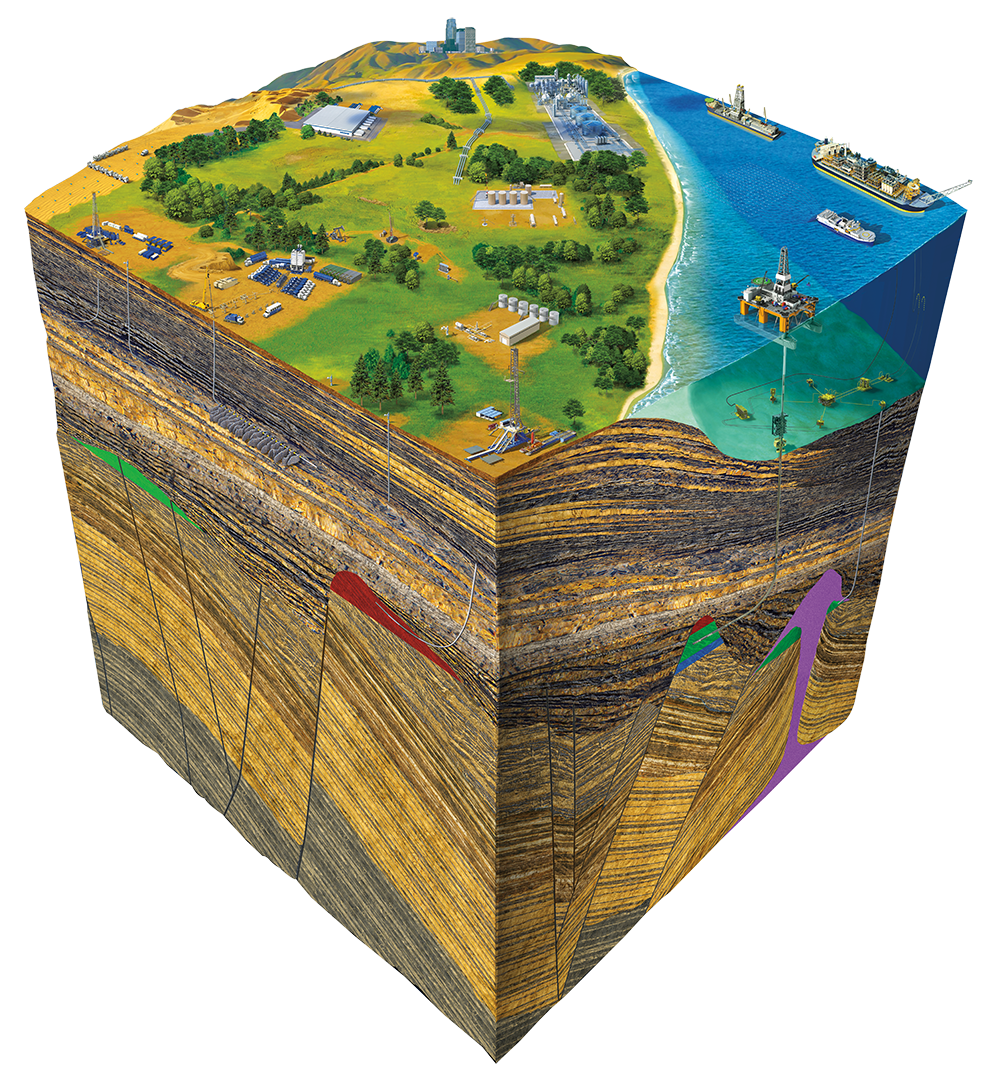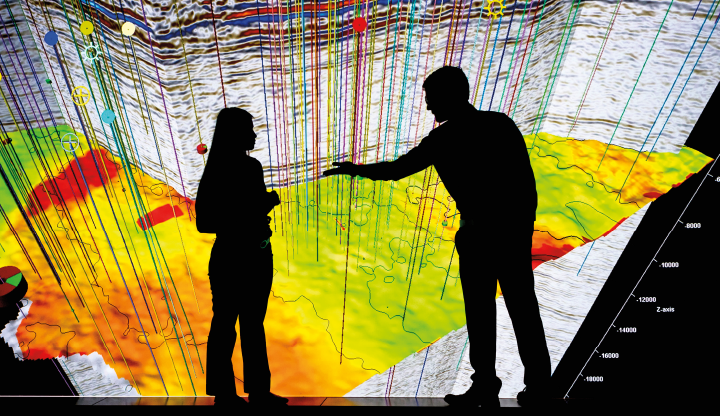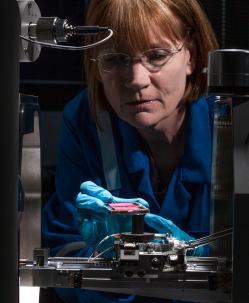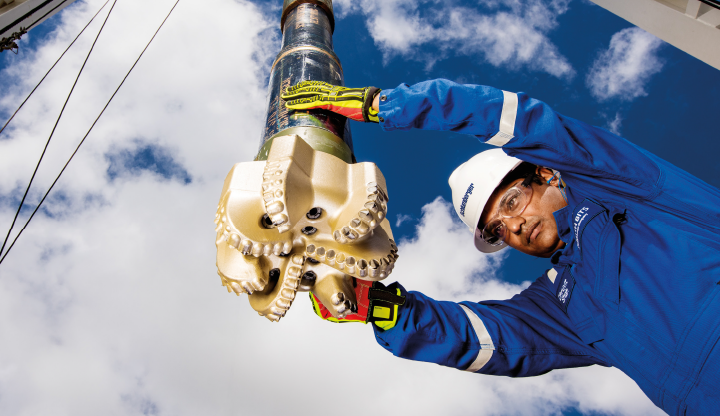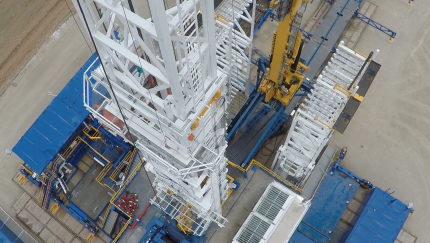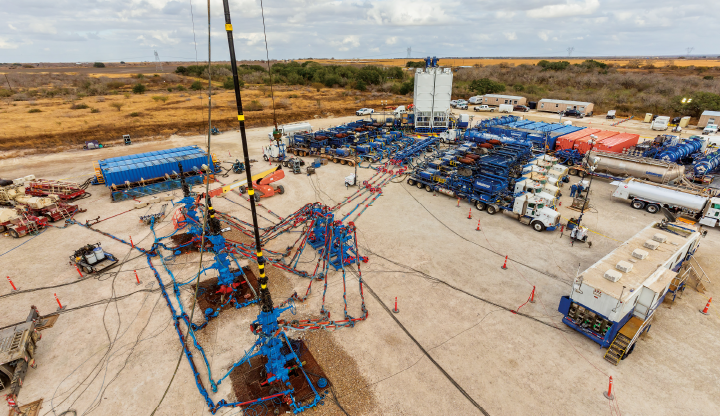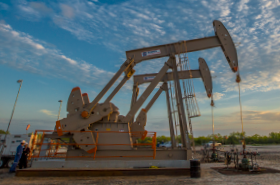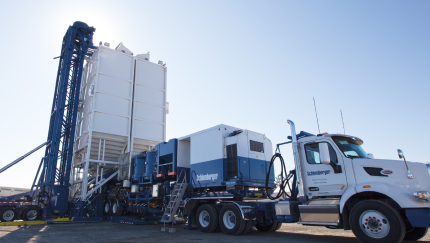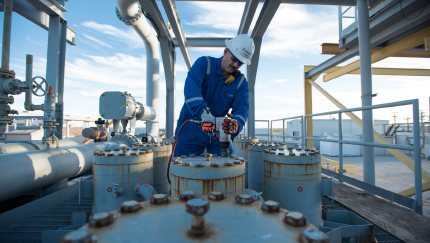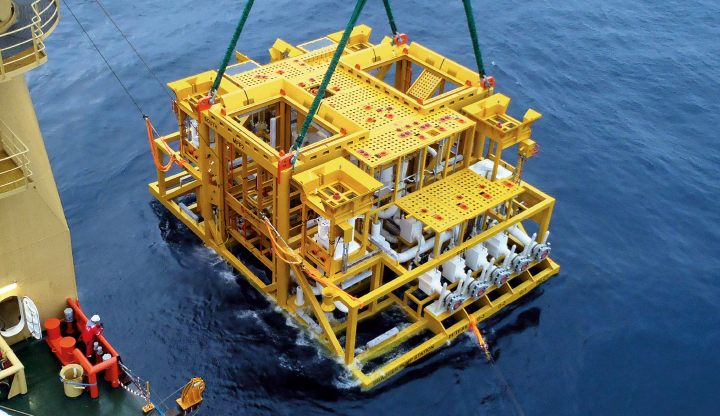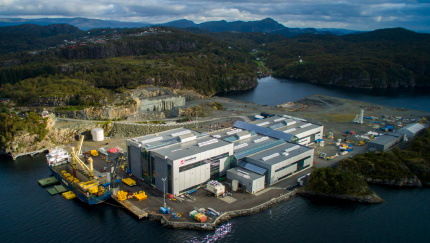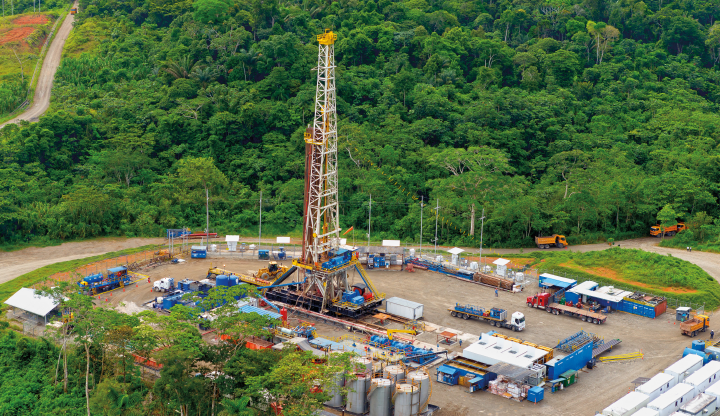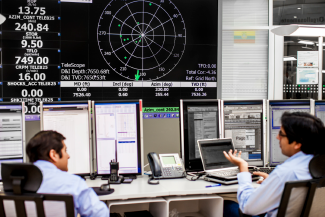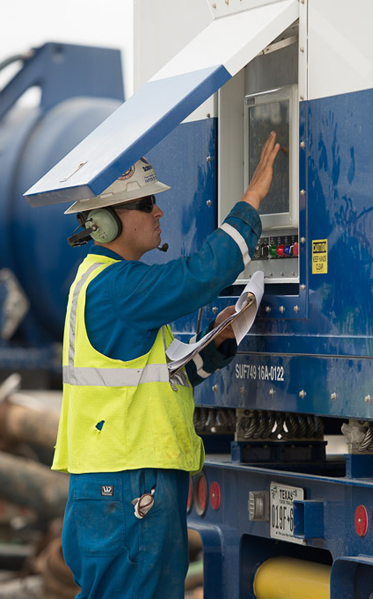Completion technologies unlock hydrocarbons from rock pores and facilitate their flow to the wellbore. Completing a well usually involves installing seamless steel pipe to form a casing string with cement pumped into the annulus between the casing and the wellbore to zonally isolate the well. A stable path must then be created for the oil or gas to reach the surface.
Perforations are made in the casing to open the wellbore to flow before stimulation technologies are used to maximize both flow rate and recovery. One technique in particular, hydraulic fracturing, is commonly performed on oil and gas wells in low-permeability reservoirs. This technique pumps engineered fluids at high rates and high pressures into the section to be produced, which creates fractures in the rock. The proppant mixed with the fluids, usually sand or ceramic spheres, keeps the fractures open so the oil and gas can flow to the wellbore. With the move to more oil and gas development in unconventional reservoirs in North America, a number of new technologies have been introduced to improve this process.
Since its deployment in 2010, the HiWAY* flow-channel fracturing technique has increased average well production in unconventional reservoirs by 20% while also reducing proppant use by 40% and water use by 25%. Other advanced Schlumberger technologies, such as BroadBand* unconventional reservoir completion services, further improve economics by ensuring that every fracture system is kept open from tip to wellbore. For example, one application of BroadBand Sequence* fracturing service in a horizontal well in the Wolfcamp Shale in the Midland basin in Texas increased production by 42%.
Unconventional reservoir operations also require efficiency to decrease total well costs. By integrating the CAMShale* fracturing fluid delivery and flowback service with Schlumberger downhole technologies, more streamlined operations can be achieved. In addition, by engaging a multi-skilled workforce using Cameron surface equipment, more stages can be completed per day to lower total well costs.
Once a well has been stimulated, artificial lift pumps must be installed because only about 5% of oil and gas wells have enough pressure to flow naturally. Since our 1998 acquisition of Camco International, Schlumberger has established a leadership position in electric submersible pumps (ESP) through continuous development of REDA* ESP systems, the history of which goes back to 1926. Schlumberger ESP systems now have integrated sensors that not only take the measurements necessary to optimize performance but also measure well pressure and temperature. These measurements can signal when pump performance is starting to decline or if the well needs workover operations to maintain production levels.
The most common artificial lift method used, which is also the most economical in low flow conditions, is a rod lift system with progressing cavity pumps (PCPs). Beginning in May 2013, Schlumberger acquired 12 rod lift companies throughout North America as well as a leading market player in PCP systems. Currently, Schlumberger is the only provider of lift services throughout the full production life cycle that complement our highly collaborative and technology-based business models for pore to pipeline solutions.
During its lifetime, a producing well usually requires workover operations to maintain, improve, or restore production through mechanical repair or fluid-based treatment. Workover operations often use coiled tubing systems to save operating costs and reduce health, safety, and environmental risks by avoiding the need to install a rig. ACTive* real-time downhole coiled tubing services offer an advantage by using fiber optics to accurately measure key well parameters, such as real-time pressure and temperature. The data can then be swiftly interpreted to optimize production flow while reservoir treatments are still in progress for completing the workover with only one trip in the wellbore.
Ultimately, the most effective way to avoid workover operations is to install an intelligent completion that incorporates permanent downhole sensors and surface-controlled downhole flow control valves. These sensors and valves enable operators to monitor, evaluate, and manage production or injection in real time without the need for well interventions. The evolving challenges of large-scale developments on land and offshore, as well as the need to maximize reservoir contact, ensure well integrity, and manage uncertainty, were the impetus behind the development of the Manara* production and reservoir management system.
The Manara system is the result of an eight-year collaboration between Saudi Aramco and Schlumberger to develop an intelligent completion system for multizone, multilateral, extended-reach, and extreme reservoir contact wells. Integrating 30 patented technologies, the Manara system realizes permanent, real-time monitoring of downhole pressure, temperature, water cut, and flow rate as well as provides in-lateral flow control of zones. This high-level monitoring enables engineers to make production decisions in hours rather than the typical days or weeks when using conventional completion systems.
With artificial lift systems operating in nearly every well, and the number of intelligent completion systems increasing every year, well and reservoir data are more readily available. Advanced software solutions to manage these intelligent completion systems provide a management tool to increase operational efficiency based on data intelligence that tracks performance, alerts operators about events, and pinpoints problems. At the same time, this management tool cuts through the sheer volume of big data, which can obscure understanding for taking the right action at the right time.
It takes the Avocet* production operations software platform to efficiently and cost-effectively manage production by coupling modeling software and engineering workflows. Designed to handle the complexities of production operations, the Avocet software platform conditions, validates, and stores high-frequency, real-time data for creating a complete picture of field production over time. When operational conditions change, users have the tools to identify the reasons behind production discrepancies and use operational decision making and planning workflows that take into account the economic impact throughout the life of the field.
With the reservoir producing to the surface, the next stage of the pore to pipeline journey concerns the production systems that collect, separate, and treat the production fluids before delivery to the pipeline.
